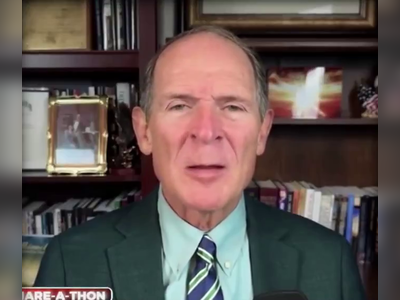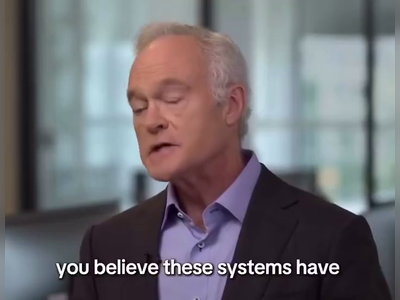
Global Economic Outlook: Growth Projections Adjusted Amid Rising Inflation
Economists revise GDP growth forecasts as inflationary pressures increase worldwide.
International economic forecasts have been adjusted as several key global economies face heightened inflationary pressures.
The International Monetary Fund (IMF) has reported a global growth projection of 3% for the following year, down from an earlier estimate of 3.5%.
This revision reflects the challenges that economies are grappling with, including supply chain disruptions, rising energy prices, and persistent labor shortages.
In the United States, inflation reached its highest level in four decades, prompting the Federal Reserve to implement a series of interest rate hikes.
Analysts expect that continued monetary tightening will impact consumer spending and investment, crucial components of the U.S. economy.
The Fed's decision to raise rates by 0.75 percentage points during its last meeting signals a commitment to curbing inflation, which stood at 8.6% year-on-year as of the latest report.
In Europe, the situation is compounded by the ongoing energy crisis stemming from geopolitical tensions, particularly in Eastern Europe.
The European Central Bank (ECB) is expected to respond similarly to its U.S. counterpart, with rate hikes anticipated in the coming months.
Eurozone inflation rates have also surged, with recent figures indicating a record rate of 9.1%.
Emerging economies are not exempt from these trends.
Countries in South Asia, such as India and Pakistan, are experiencing inflation rates that have reached multi-year highs, prompting authorities to adjust monetary policies.
In Asia, China’s economic growth is projected to be slower than initially forecast due to strict COVID-19 containment measures and diminishing demand in technology exports.
Global commodity prices remain volatile, influenced by ongoing conflicts and trade policies.
The price of oil has fluctuated significantly, with Brent crude averaging above $100 per barrel, affecting transportation and manufacturing costs worldwide.
Furthermore, the World Trade Organization (WTO) has indicated a slowdown in international trade growth, forecasting an increase of only 3% in global trade volumes in the upcoming year, compared to a previously projected 4.7%.
This deceleration is attributed to rising trade barriers and the lasting effects of the pandemic on supply chains.
Labor markets are also feeling the strain.
Recent statistics show that unemployment rates remain significantly higher than pre-pandemic levels in various regions, despite a general recovery in job creation.
Countries worldwide are grappling with workforce shortages, especially in sectors like hospitality and transportation.
As these economic factors continue to evolve, policymakers and economists worldwide are closely monitoring the situation for potential risks and further adjustments to growth forecasts.
The International Monetary Fund (IMF) has reported a global growth projection of 3% for the following year, down from an earlier estimate of 3.5%.
This revision reflects the challenges that economies are grappling with, including supply chain disruptions, rising energy prices, and persistent labor shortages.
In the United States, inflation reached its highest level in four decades, prompting the Federal Reserve to implement a series of interest rate hikes.
Analysts expect that continued monetary tightening will impact consumer spending and investment, crucial components of the U.S. economy.
The Fed's decision to raise rates by 0.75 percentage points during its last meeting signals a commitment to curbing inflation, which stood at 8.6% year-on-year as of the latest report.
In Europe, the situation is compounded by the ongoing energy crisis stemming from geopolitical tensions, particularly in Eastern Europe.
The European Central Bank (ECB) is expected to respond similarly to its U.S. counterpart, with rate hikes anticipated in the coming months.
Eurozone inflation rates have also surged, with recent figures indicating a record rate of 9.1%.
Emerging economies are not exempt from these trends.
Countries in South Asia, such as India and Pakistan, are experiencing inflation rates that have reached multi-year highs, prompting authorities to adjust monetary policies.
In Asia, China’s economic growth is projected to be slower than initially forecast due to strict COVID-19 containment measures and diminishing demand in technology exports.
Global commodity prices remain volatile, influenced by ongoing conflicts and trade policies.
The price of oil has fluctuated significantly, with Brent crude averaging above $100 per barrel, affecting transportation and manufacturing costs worldwide.
Furthermore, the World Trade Organization (WTO) has indicated a slowdown in international trade growth, forecasting an increase of only 3% in global trade volumes in the upcoming year, compared to a previously projected 4.7%.
This deceleration is attributed to rising trade barriers and the lasting effects of the pandemic on supply chains.
Labor markets are also feeling the strain.
Recent statistics show that unemployment rates remain significantly higher than pre-pandemic levels in various regions, despite a general recovery in job creation.
Countries worldwide are grappling with workforce shortages, especially in sectors like hospitality and transportation.
As these economic factors continue to evolve, policymakers and economists worldwide are closely monitoring the situation for potential risks and further adjustments to growth forecasts.











